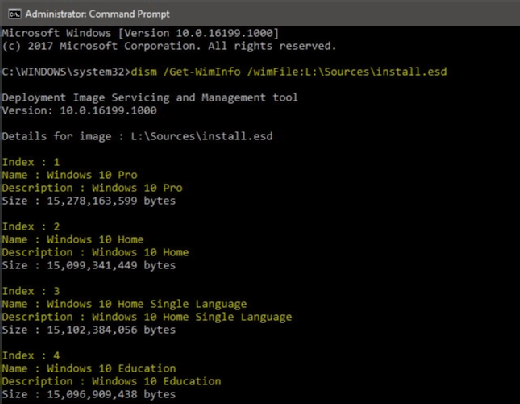Index Of Parent Directory Windows Iso Mount
Recall, that a file system is an organization of files into directories and folders. There are many different types of file systems and many different implementations, which is closely linked to the type of storage device which contains the data, e.g., a hard disk versus a thumb drive versus a CDrom, and the operating systems, e.g., Mac, Linux, or Windows. The purpose of a file system is to maintain and organize secondary storage. As opposed to RAM which is volatile and does not persist across reboots of the computer, secondary storage is designed to permanently store data.

For almost all PCs. This includes most machines with Intel/AMD/etc type processors and almost all computers that run Microsoft Windows, as well as newer Apple Macintosh systems based on Intel processors. Server install image. The server install image allows you to install Ubuntu permanently on a computer for use as a server. Nov 20, 2018 - The Dell Driver Update Utility GUI will launch on top of PowerShell at this time. Navigate to folder location to save new ISO image from '. Mount index of wim file according to the OS edition you wish to install.
The file system provides a convenient representation of the data layout which is maintained by the operating system. There are wide varieties of file system implementations that describe different ways to organize the meta-data necessary for maintaining a file system. For example, the standard file system type on Windows is called NTFS, which stands for Windows NT Files System, and the standard file systems for Linux/Unix systems is called ext3 or ext4 depending on the version.

Has a root file system where primary data and system files are stored. On Unix systems, this is the base file system, indicated by a single / at the root. On Windows, this is commonly called the C: drive.
Can also mount other file systems, like plugging in a USB drive or a inserting a CD-ROM, and the user can gain access to these other file systems through file exploration, which can use different layouts and data organizations, for example FAT32 on a USB drive or ISO 9660 on a CD rom. However, from a system's programming perspective, the programs we write are agnostics to the underlying implementation of the file system; we open a file with open() and the read from the file with read() and write with write().
Mentor Graphics, Technical Marketing Engineer Gary Lameris joined Mentor Graphics in 2008 as a Technical Marketing Engineer for the Mentor Expedition PCB flow. You can access the archives at: I would also like to say Happy Birthday to as it celebrates 25 years in simulation! What is dxdesigner.
The details of the implementation are completely transparent. How does the O.S. Maintain this illusion? That is the topic of these next lessons — we will explore the file system implementation details support the programs we've been writing so far. Figure 2: The Process Table As we know, all process start with with three standard files descriptors, 0, 1, 2, and these numbers and other file descriptors are indexes and stored in the open file table for that process's entry in the process table.
Every time a new file is open, an new row in the open file table is added, indexed at the value of the file descriptor, e.g., 3 or 4 or 5 or etc. Each row in the open file table has 2 values. The first are the flags, which describe disposition of the file, such as being open or closed, or if some action should be taken with the file when it is closed. The second value is a reference to the file table entry for that open file, which is a global list, across all process, of currently opened files.
One interesting note about the process table entries is that whenever a process forks to create a child, the entire process table entry is duplicated, which includes the open file entries and the their file pointers. This is how two process, the parent and the child, can share an open file.
We saw examples of this earlier, and we'll look at it again later in the lesson. Figure 3: The File Table Each file table entry contains information about the current file. Foremost, is the status of the file, such as the file read or write status and other status information.
Additionally, the file table entry maintains an offset which describes how many bytes have been read from (or written to) the file indicating where to read/write from next. For example, when a file is initially opened for reading, the offset is 0 since nothing has been read.
After reading 10 bytes, the offset has been moved forward to 10 since 10 bytes have been read from the file. This is the mechanisms that allows program to read a file in sequence. Later, we'll see how we can manipulate this offset and read from different parts of the file.
The last entry in the table is a v-node pointer which is a reference to a virtual node (v-node) and index node (i-node). These two nodes contain information about how to read the file. The v-nodes ad i-nodes are references to the file's file system disposition and underlying storage mechanisms; it connects the software with hardware. Night in paris theme. For example, at some point the file being opened will need to touch the disc, but we know that there are different ways to encode data on a disc using different file systems. The v-node is an abstraction mechanism so that there is a unified way to acces this information irrespective of the underlying file system implementation, while the i-node stores specific access information.